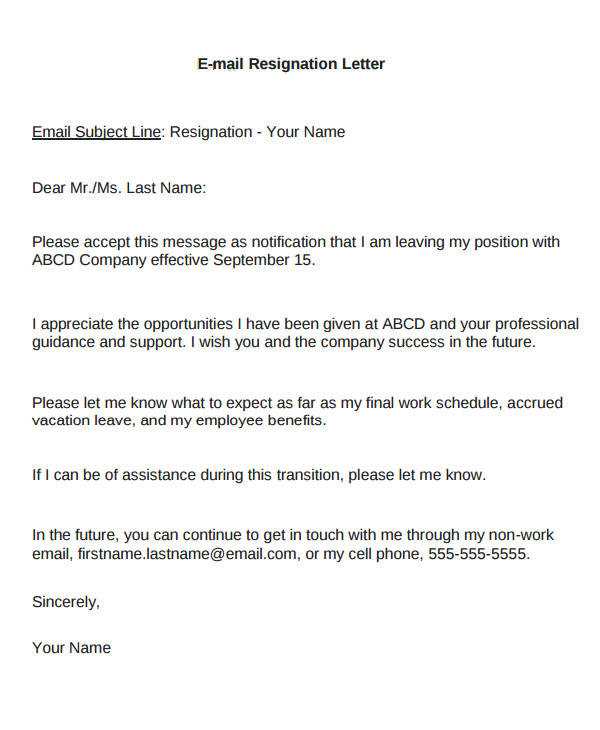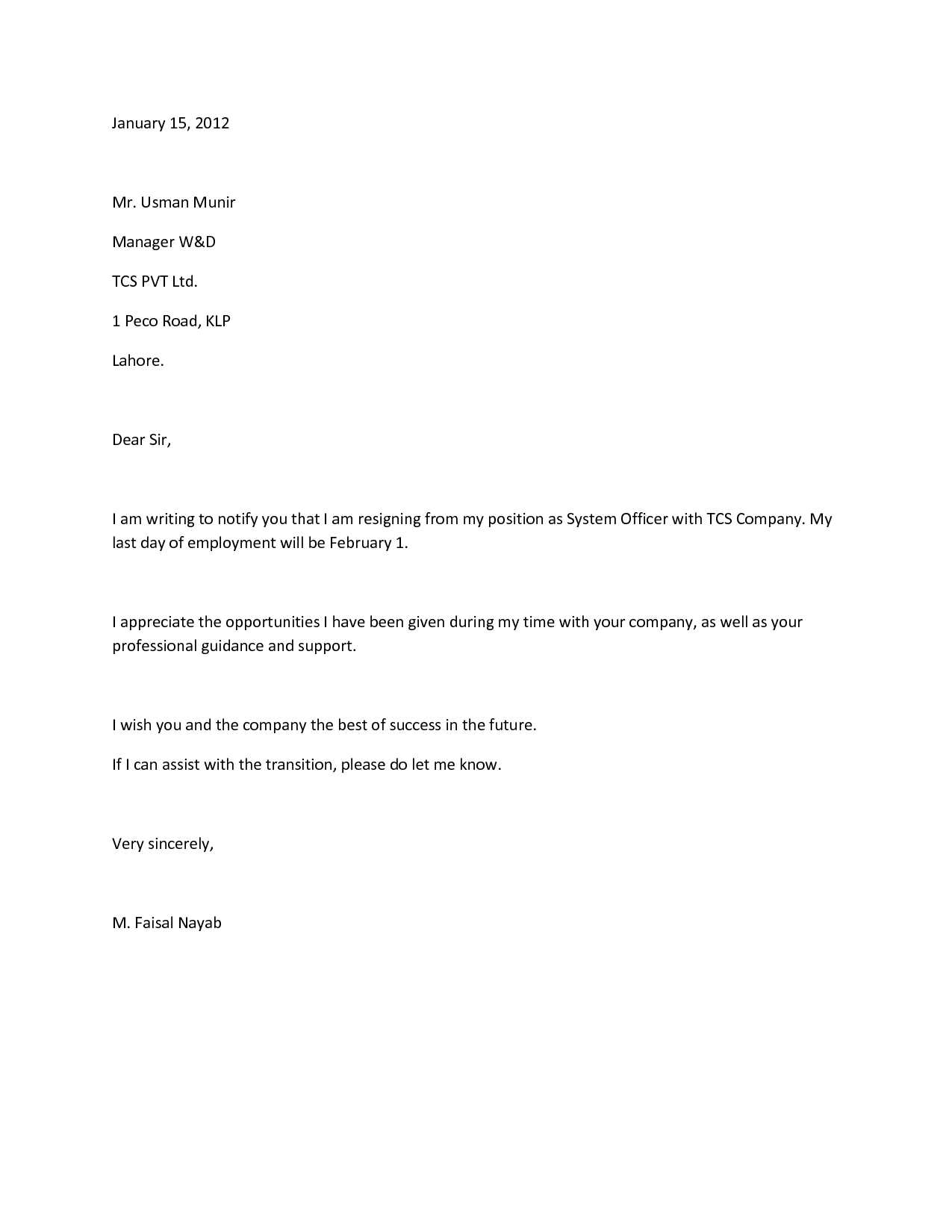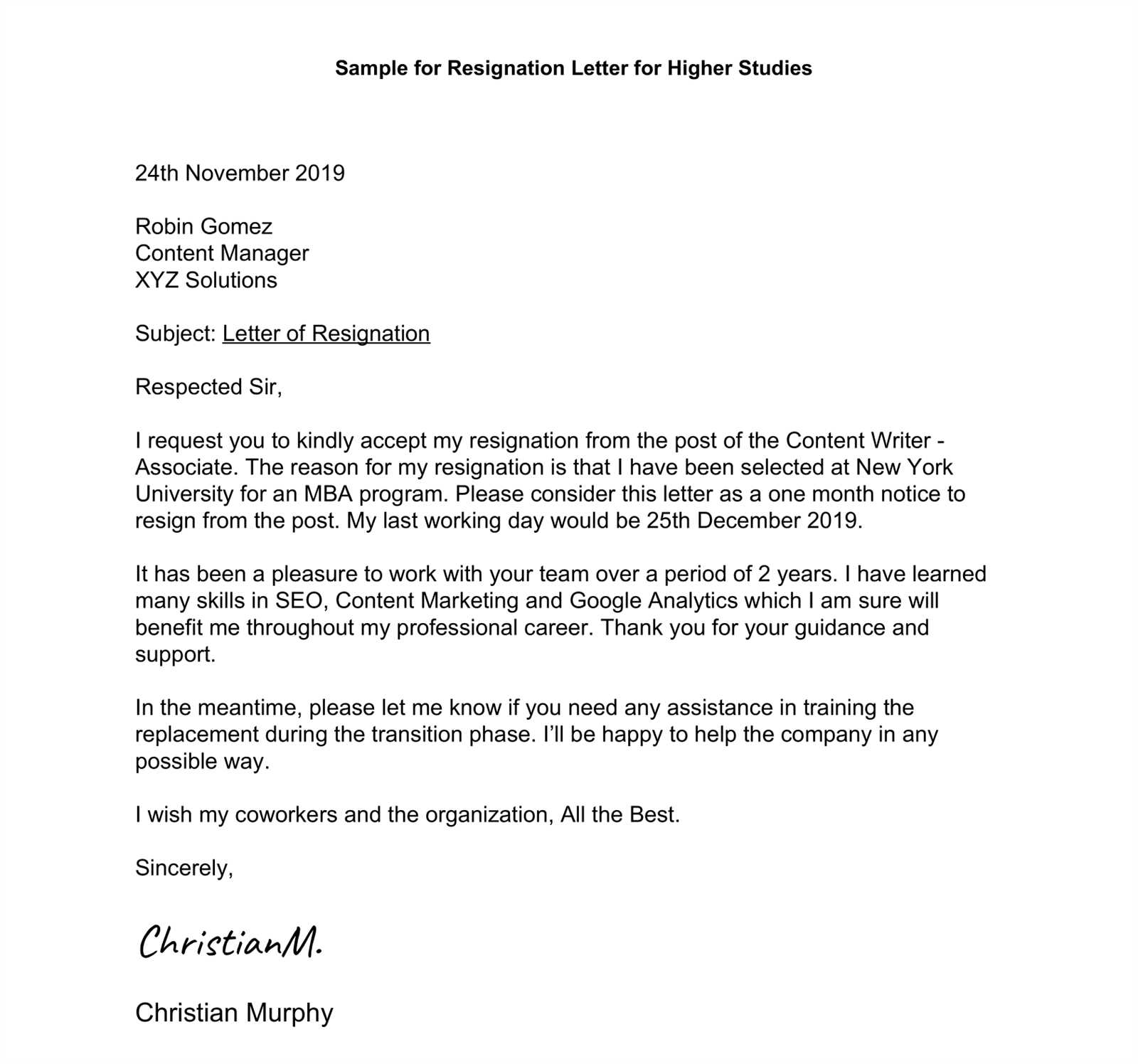Resignation Letter Template for Email Submission

When you decide to leave a job, it’s important to formally notify your employer in a way that maintains professionalism and respect. A well-crafted message can ensure a smooth transition and leave a positive impression on your colleagues and supervisors. The following guide provides a structured approach to help you write a polite and clear notification of your decision to step down from your role.
Key Elements of a Formal Departure Notification
To convey your decision effectively, certain elements are essential to include in your communication. These components help ensure clarity and professionalism:
- Clear Intent: State your decision to leave and the effective date of your departure.
- Gratitude: Acknowledge your appreciation for the opportunity and experience.
- Transition Plans: Offer to help with the handover of tasks or projects.
- Contact Information: Provide details for staying in touch after your departure.
Maintaining a Positive Tone
While it may be tempting to express frustration or dissatisfaction, it’s best to remain diplomatic and neutral in your message. Keeping a positive tone is crucial, as you never know when you might need a reference or encounter your employer in the future.
Timing and Delivery
Choose the right time to send your message, ideally giving your employer ample time to make adjustments. Make sure to send the notification to the correct individual or department, ensuring that it is received in a timely manner. Delivery via a professional communication channel, such as work email, ensures that the message is formal and appropriate.
Common Pitfalls to Avoid
There are several mistakes people often make when notifying their departure. Avoid the following:
- Unclear Messaging: Be specific about your last day and avoid vague language.
- Too Much Detail: Keep the message concise and to the point. There’s no need to explain personal reasons unless you choose to do so.
- Informality: Use a professional tone throughout. Avoid slang or overly casual language.
Final Thoughts

By following the steps outlined above, you can craft a message that communicates your decision in a professional and respectful manner, ensuring a smooth exit from your position while preserving important relationships. A well-written farewell can also leave doors open for future opportunities.
Understanding the Importance of Formal Departure Notifications

When leaving a position, it is essential to communicate your decision in a clear and professional manner. Doing so ensures that you maintain positive relations with your employer and colleagues, as well as leaving a lasting impression. Crafting an effective departure message is an important part of the process, and understanding its key elements can help you navigate this transition smoothly.
Key Components of a Formal Notification
To make your message both clear and effective, it is important to include several key points:
- Decision Statement: Clearly mention your intent to step down and provide the effective date.
- Gratitude: Express appreciation for the experience and opportunities gained during your time with the company.
- Future Plans: Offer assistance in handing over tasks or transitioning responsibilities to a colleague.
- Contact Information: Leave a way for colleagues or your employer to reach you after you leave.
Choosing the Right Tone for Your Message

Maintaining a professional tone throughout your message is crucial. It is best to avoid negative language, as it can leave a bad impression. A neutral and respectful approach ensures that your departure is handled with dignity, keeping the door open for future opportunities or references.
Once you have composed your message, remember to send it through an appropriate communication channel. Timing and careful delivery can make all the difference in ensuring a smooth transition for both you and your employer.